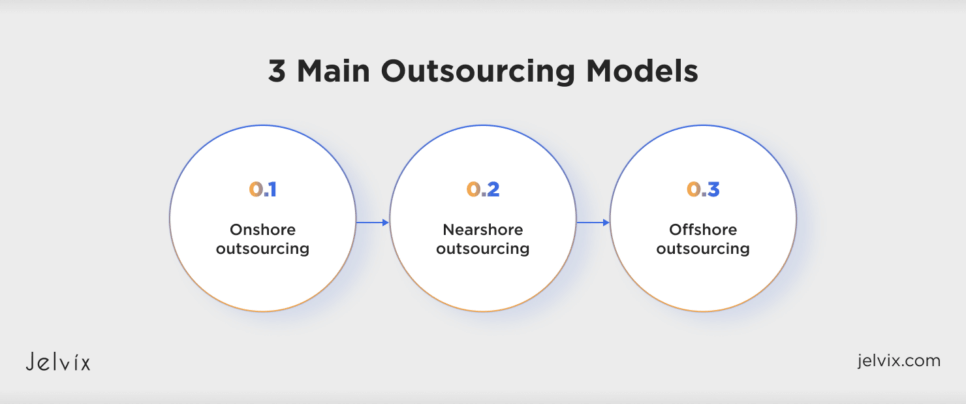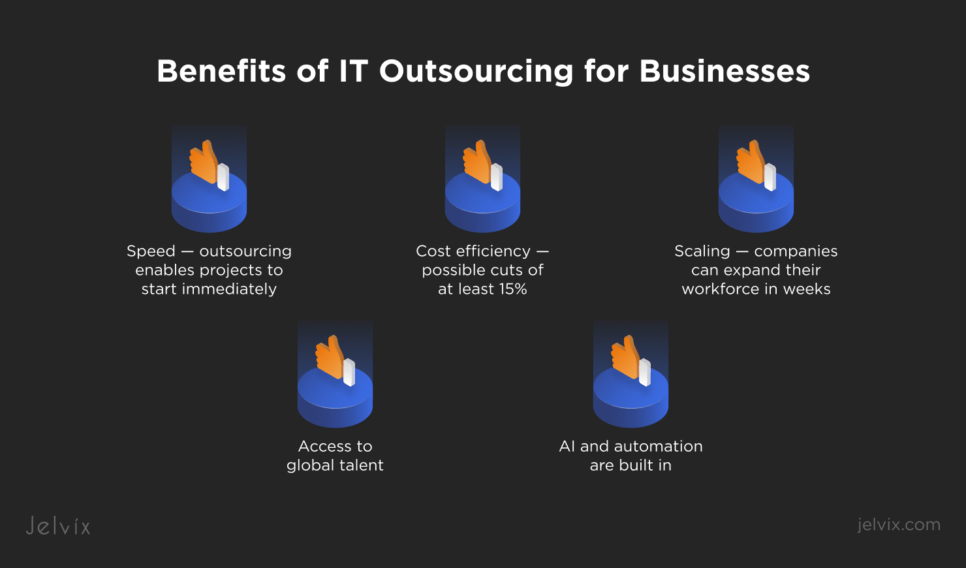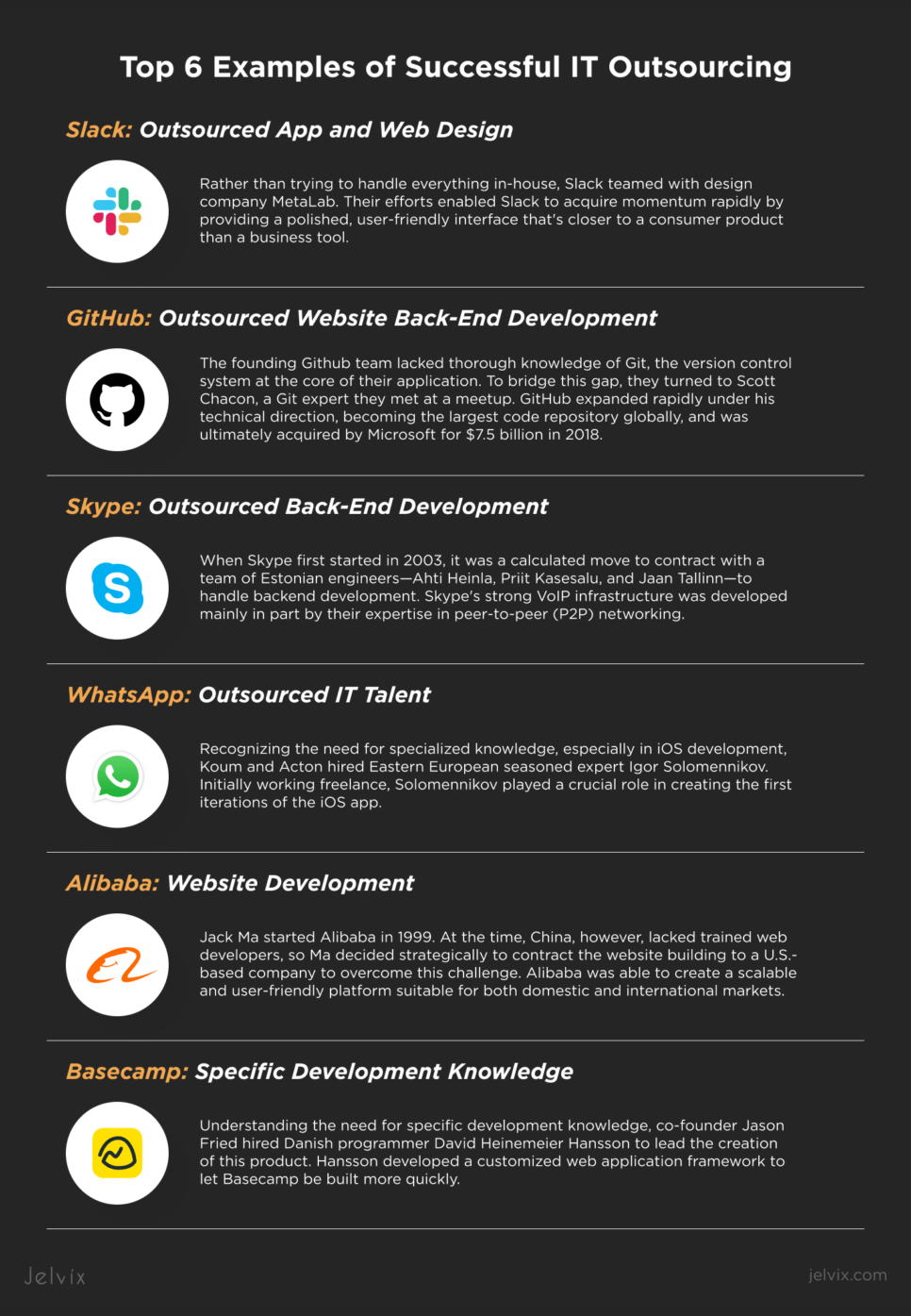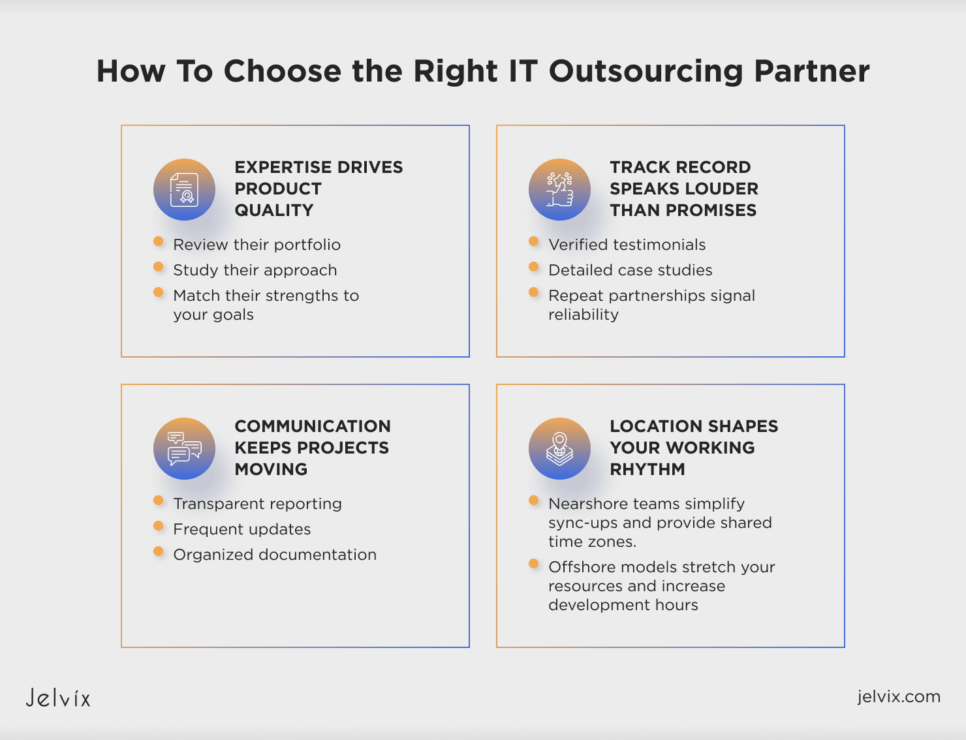The IT outsourcing market is now becoming a new norm. Statista estimates that worldwide IT outsourcing revenue has surpassed $541 billion in 2024 and is expected to keep increasing consistently over the next five years. Core to today’s business operations, this expansion encompasses several service categories, including administration outsourcing, application outsourcing, and web hosting.
And how can we proceed in our society without artificial intelligence? In a recent Deloitte survey, 83% of executives reported integrating AI into their outsourcing strategies. A growing segment — 20% — is already building management systems for their digital workforce, including AI bots and intelligent automation tools.
Problems, including assessing ROI, contracting for AI capabilities, and governance, are stopping progress. To unlock actual value, businesses must collaborate with vendors, establish effective AI governance mechanisms, and focus on specific use cases.
Meanwhile, traditional outsourcing is getting a modern upgrade. Although back-office services remain a mainstay, more organizations are outsourcing front-office tasks, including sales, marketing, and R&D—areas that can drive corporate transformation.
It now extends beyond cost control. It’s about agility, fast-to-value, and access to skilled talent. This change is also pushing value-driven agreements, rather than hourly contracts and outcome-based approaches, to the forefront.
Companies are reevaluating how they manage their outsourced teams to stay ahead. Managing an expanded workforce, which today comprises freelancers, tech partners, and AI, requires more than just contracts.
Organizations are increasing the role of the Vendor Management Office (VMO) to oversee this complex ecosystem and ensure alignment across talent, tech, and business goals.
In this article, we’ll break down how it works today and explore six famous real-world outsourcing examples that demonstrate the power of the right strategy.
What is IT Outsourcing?
Let’s imagine a scenario where a retail startup wants to build a mobile app to manage customer loyalty. Still, their in-house team is stretched thin and lacks experience in mobile development. Instead of hiring a new department from scratch (which takes a lot of time and money), they turn to a specialized software firm in Poland that delivers the app in eight weeks. It’s, first of all, faster and cheaper. Additionally, it offers improved performance.
That’s IT outsourcing in practice — enlisting outside experts to manage your technical needs. Outsourced development, IT infrastructure maintenance, or user support systems enable businesses to accomplish tasks quickly without creating everything in-house.
Depending on your goals—speed, cost, language compatibility, time zone alignment—companies choose from three main outsourcing models:
- Onshore outsourcing refers to partnering with providers located within your own country. Real-time collaboration usually makes sense, as it reduces the likelihood of misunderstandings. Often, though, it comes with the most significant price tag.
- Nearshore outsourcing works with teams in nearby or neighboring countries. Time zones overlap more; cultural similarities help; expenses go down without compromising much speed or quality. One classic example is American businesses seeking developers in Canada or Colombia.
- Offshore outsourcing reaches across continents. It’s the most budget-friendly model, popular among firms in the U.S. and Europe that work with developers in India, Ukraine, or the Philippines. Although some differences can make the process challenging, practical management tools and careful scheduling make this approach perfect for almost around-the-clock productivity.
From startups to Fortune 500 companies, those that outsource today are seeking speed, innovation, global advantage, and cost savings. Nearshore, offshore, or onshore models–these are now a core growth strategy.
Benefits of IT Outsourcing for Businesses
Why are so many major companies outsourcing their development? Several drivers can explain it:
- Access to global talent is now a strategic priority. A recent ManpowerGroup research indicates that 77% of companies struggle to locate candidates possessing the necessary skills. This encourages businesses to consider options such as upskilling or global outsourcing of IT services to invest in the right employees for the long term. The best developers aren’t always in your city or even your country. Outsourcing connects you with world-class engineers, cybersecurity experts, and data scientists, removing regional restrictions.
- Speed is now more vital than ever. Companies demand outcomes now, whether they involve internal system upgrades or the introduction of a new product. Outsourcing enables projects to start immediately and provides ready-made teams, thereby reducing onboarding time.
- AI and automation are built in. As part of the agreement, many outsourcing partners now provide innovative tools and pre-trained models. Rather than starting from nothing and working out the complexities of AI, businesses draw on already battle-tested knowledge.
- Scaling up or down used to take months. Companies can now expand or reduce their outsourced workforce in weeks without stressing about contracts, layoffs, or internal friction.
- We can find great justification for outsourcing in cost efficiency. Based on studies showing possible cuts of at least 15% in in-house operations, businesses can save substantial amounts. Lower salaries, reduced overhead, and the elimination of recruiting and training associated costs help produce these savings.
And finally, outsourcing clears the path for focus. Instead of getting bogged down in the details of backend systems or bug fixes, companies can focus on strategy and growth.
Top 6 Examples of Successful IT Outsourcing
Slack: Outsourced App and Web Design
From little startups to Fortune 500s, Slack is trusted by over 750,000 companies and utilized by over 42 million active users today. But Slack’s early success was the outcome of wise judgments, one of which was knowing what to outsource, and when.
Stewart Butterfield started Slack in 2013, and his staff had a great idea but no internal resources. Rather than trying to handle everything in-house, they teamed with design company MetaLab.
Designing Slack’s user interface, branding, website, and early UX features—including the now-familiar channel structure and notification system—was assigned to MetaLab. Their efforts enabled Slack to acquire momentum rapidly by providing a polished, user-friendly interface that’s closer to a consumer product than a business tool.
Early adopters connected with a beta product that immediately sparked a viral expansion curve. The six-month partnership provided Slack with the boost it needed before transitioning to an internal engineering staff.
Additionally, it is worth noting that Slack’s case is not limited to IT outsourcing alone. Its user base expanded fast as it developed. Managing support internally would have slowed the team down. Instead, they handled early support queries and user onboarding problems, working with a US-based customer service company, Support Driven.
This choice allowed Slack to grow without sacrificing the quality of service.
For everyone wondering, “Which is the best example of outsourcing?” this one’s hard to beat. It demonstrates how even the most successful companies that outsource can preserve quality and brand integrity while quickening their road to market.
GitHub: Outsourced Website Back-End Development
Originally a startup with a great concept—to provide a tool that streamlines code sharing and developer collaboration—GitHub was founded in 2008. However, the founding team lacked thorough knowledge of Git, the version control system at the core of their application.
To bridge this gap, they turned to Scott Chacon, a Git expert they met at a Ruby meetup in San Francisco. Unable to afford a full-time hire, they brought him on as a consultant.
The backend of GitHub was developed in significant part by Chacon’s strong Git knowledge. He oversaw the development of Gist, a tool that enables users to publish code snippets—a capability that remains indispensable on GitHub today.
Chacon had an influence that extended beyond his first consulting job. Understanding his worth, GitHub invited him on as a co-founder and Chief Information Officer. GitHub expanded rapidly under his technical direction, becoming the largest code repository globally, and was ultimately acquired by Microsoft for $7.5 billion in 2018.
Skype: Outsourced Back-End Development
It’s worth mentioning how Skype transformed global communication as we get ready to say goodbye to it in May 2025. When Skype first started in 2003, it was a calculated move to contract with a team of Estonian engineers—Ahti Heinla, Priit Kasesalu, and Jaan Tallinn—to handle backend development.
Skype’s strong VoIP infrastructure was developed mainly in part by their expertise in peer-to-peer (P2P) networking, which they honed during their work on Kazaa.
With free internet-based calls, Skype’s introduction disrupted the telecommunications sector and attracted millions of customers globally rapidly. Its success resulted in acquisitions by eBay in 2005 for $2.6 billion and subsequently by Microsoft in 2011 for $8.5 billion.
Beyond its financial success, Skype played a crucial role in helping Estonia establish itself as a tech hub. Former staff members, known as the “Skype Mafia,” went on to launch or invest in numerous profitable firms, including Wise, Bolt, and Pipedrive, thereby building a thriving startup scene in Estonia.
WhatsApp: Outsourced IT Talent
Jan Koum and Brian Acton founded WhatsApp in 2009 with a single goal: to create a simple, reliable, and ad-free messaging platform. Recognizing the need for specialized knowledge, especially in iOS development, Koum and Acton hired Eastern European seasoned expert Igor Solomennikov.
Initially working freelance, Solomennikov played a crucial role in creating the first iterations of the iOS app. His contributions were so significant that he subsequently became a full-time team member of WhatsApp.
Apart from iOS programming, WhatsApp is known to successfully outsource software development and other key components, including graphic design and server infrastructure management. This strategy enables the core staff to focus on their primary objective: delivering an exceptional customer experience.
Alibaba: Website Development
Jack Ma started Alibaba in 1999, aiming to establish a global e-commerce platform. At the time, China, however, lacked trained web developers and had insufficient technological knowledge needed to create a strong online market. Ma decided strategically to contract the website building to a U.S.-based company to overcome this challenge.
Alibaba was able to create a scalable and user-friendly platform suitable for both domestic and international markets. This strategy not only accelerated the development process but also ensured that the platform could effectively navigate China’s complex internet regulations.
Basecamp
In the early 2000s, the Chicago-based web design company 37signals sought an internal tool to manage client projects better. Understanding the need for specific development knowledge, co-founder Jason Fried hired Danish programmer David Heinemeier Hansson to lead the creation of this product.
Hansson’s job was creating a user-friendly and functionally sound project management tool. He decided to work with Ruby, a programming language well-known for simplicity and efficiency. Hansson developed a customized web application framework to let Basecamp be built more quickly.
Emphasizing convention over configuration, this framework—later published as Ruby on Rails in 2004—offered a structured approach for web development.
Founded in February 2004, Basecamp became well-known quickly for its simplicity and efficiency in project management. The success of Basecamp validated the decision to outsource its development to Hansson.
Concurrent with this, Ruby on Rails revolutionized web development by providing programmers with a robust and efficient framework. Since then, many well-known companies, including GitHub, Shopify, and Airbnb, have adopted Rails, underscoring the significant impact of this strategic outsourcing choice.
How To Choose the Right IT Outsourcing Partner
The right outsourcing partner moves the business forward. It sharpens your product, speeds up timelines, and unlocks capabilities fast. But it should be a match. So, how exactly do you find one?
Expertise Drives Product Quality
Skilled partners shape strong products from the ground up. The best software development outsourcing companies bring focused technical knowledge and real-world experience. They’ve built solutions in your industry. They’ve solved challenges similar to yours.
- Review their portfolio.
- Study their approach.
- Match their strengths to your goals.
Track Record Speaks Louder Than Promises
Results tell the story. Look for partners with consistent delivery across multiple clients. The strongest IT outsourcing examples demonstrate a clear impact, including scalable platforms, reduced time-to-market, and improved performance. To get the needed information, go for:
- Verified testimonials.
- Detailed case studies.
- Repeat partnerships signal reliability.
Communication Keeps Projects Moving
Teams that know how to communicate do tasks more quickly. Transparent reporting, frequent updates, and organized documentation help to decrease disruptions and increase efficiency. Leading outsourcing companies design easy feedback systems and apply tools that complement your working style.
Location Shapes Your Working Rhythm
Response times, teamwork, and even compliance are influenced by geography. So let’s repeat the basics:
- Nearshore teams simplify sync-ups and provide shared time zones.
- Offshore models stretch your resources and increase development hours.
Determine which helps your team with their structure, tempo, and delivery requirements.
Culture and Work Ethic Set the Pace
A good partner works well with you by being prompt in their responses, taking the initiative, and staying focused. Having a strong cultural fit enhances teamwork. This is especially important when outsourcing software development for startups, where speed and flexibility are key to survival.
The best outsourcing decisions are informed, data-driven, and aligned with business objectives. Great companies that use outsourcing build long-term partnerships with teams that think ahead.
How Different Types of Companies Benefit from IT Outsourcing
Outsourcing plays a different role depending on the size and structure of a company, but the value remains consistent. For startups and small businesses, outsourcing bridges the talent gap without straining budgets.
These companies often lack the in-house skills or capital to build a full development team, so outsourcing becomes a shortcut to accessing global expertise.
As they expand, mid-sized businesses remain agile through IT outsourcing. They might have to expand their tech stack, integrate new tools, or complete projects at a pace their teams cannot sustain on their own. Such companies become more flexible by outsourcing specific tasks or entire projects.
Outsourcing provides instant access to specialized expertise, whether it’s creating an enterprise-grade online platform or onboarding a DevOps specialist.
Enterprises approach outsourcing with a focus on scale, efficiency, and long-term strategy. Their goals often revolve around optimizing costs, supporting global operations, and freeing up internal resources to focus on transformation. In this setting, one common area where outsourcing adds actual value is enterprise software development.
Rather than burdening internal staff, they work with outsourcing companies to create and preserve sophisticated systems, modernize legacy platforms, or introduce regionally tailored solutions. The outcome is a leaner, faster, more strategic business capable of adjusting to changing market needs without losing focus on big-picture growth.
Let's discuss which IT outsourcing trends will change the industry.
Outsourcing Risks and Mitigation Strategies
Outsourcing exposes risk even if it offers speed and scope. Even the best-laid intentions can be derailed by cultural mismatches and poor communication. Often, missing deadlines or confusing outputs result from time zone differences, language difficulties, and varying job expectations.
The best companies approach this head-on by collaborating with a dedicated development team aligned from day one. Teams that understand your priorities, operate under a clear communication system, and utilize your tools and workflow are considerably more likely to deliver consistently.
Still another important issue is data security. Companies must secure every level of exposure when distributing access to infrastructure, customer data, or proprietary code. This includes secure development environments, non-disclosure agreements (NDAs), and role-based access controls.
It also includes confirming your partner follows pertinent guidelines, covering GDPR to ISO certifications. Protection of intellectual property has to be non-negotiable. Every member of the outsourced software development team must be covered under well-specified IP agreements, and delivery ownership should be clearly stated. These protections are necessary to keep confidence and long-term stability.
Contractual agreements define the relationship. Weak agreements provide opportunity for scope creep, misalignment, or unexpected costs. A robust outsourcing agreement typically covers deliverables and response times, escalation routes, quality assurance (QA) criteria, and post-delivery assistance.
More businesses are establishing flexible contracts that allow for increased flexibility, changing objectives, and integrating new technology as part of the latest outsourcing trends. Your guardrail is a legal framework; it keeps the project operating through changing budgets, tightened deadlines, or evolving corporate goals. Done correctly, it provides a clear path ahead and shields both parties.
Conclusion
The finest outsourcing relationships start with proof rather than promises. Jelvix delivers by embedding technical talent into your process, not just onto your project. From worldwide companies to fast-moving startups, we follow your road map and move at your speed. Our team becomes your extension.
Whether you’re scaling a platform, modernizing enterprise systems, or building a product from scratch, Jelvix builds with intent. We don’t guess; we architect. We don’t follow trends; we shape them. Our approach combines agility in execution with accuracy in delivery, ensuring your company meets demand and even stays ahead of it.
Working with Jelvix means results that hold up under pressure. No inflated buzzwords. Strong code, reliable delivery, and a technical partnership that effectively moves things forward. Try for yourself – book a call today.
FAQ
Which industries most commonly use IT outsourcing?
IT outsourcing is prevalent in various industries, including tech startups, e-commerce, finance, healthcare, and telecommunications. These sectors utilize outsourcing to scale their operations, access specialized expertise, reduce costs, and remain competitive in evolving markets.
How do I know if outsourcing is right for my business?
Outsourcing can help companies quickly scale their tech capabilities, access specialized skills, and reduce operational costs without the need to hire full-time staff. Startups often find this approach beneficial.
Can outsourcing be effective for non-technical companies?
Absolutely. Non-technical companies can outsource IT solutions without having internal technical teams. By working with a reliable provider, you can concentrate on your core business while experts manage technical development.
How do outsourcing companies ensure data security and compliance?
Reputable outsourcing providers follow international data security standards like ISO certifications and GDPR compliance. They have strict confidentiality agreements and secure communication to protect sensitive data during development.
What is the role of project management in outsourced software development?
Effective project management is crucial for successful outsourcing. A competent project manager connects your company with the outsourcing team, ensuring deadlines are met, quality standards are maintained, and the project aligns with business goals.
Need a qualified team of developers?
Extend your development capacity with the dedicated team of professionals.















